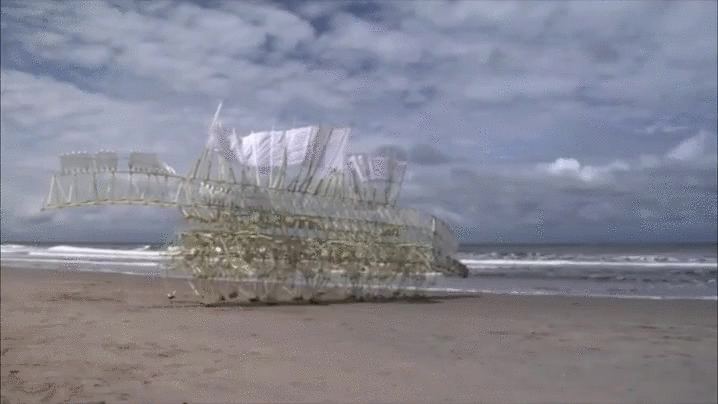1A. Strandbeests, the gigantic sculptures created by Theo Jansen that use wind power to walk up and down the beaches of the Netherlands are an example of effective complexity. They exhibit qualities of both randomness and order. The mechanism for the legs was developed through an evolution simulation (randomness). The geometry of the legs is rather simple, but when assembled together, the legs create an intricate walking thing. There is a formal order to the mechanics of the creatures, which lends itself to the graceful movements of the sculptures. In this case, the randomness led to an order, mimicking our own development as a species. Some of the Strandbeests even feature abilities to respond to their environments -- they are able to turn away from water or anchor themselves in the case of too much wind.

1B. The problem of uniqueness: As mentioned in the essay, part of the value of art for a long time has been its one-of-a-kind nature. While I understand that rarity has value, I think we often place too much emphasis on it. Valuable art is art that you can develop a connection with. It doesn't seem particularly important whether everybody else also has access to the same art. In fact, I think art has the potential to be even more powerful when it can be mass produced. If a piece of art can be mass produced, whether each piece is unique as is the case for some pieces of generative art, more people can access it, and, therefore, more people have the opportunity to derive meaning from it. If enough people derive meaning from a piece, that piece might have the power to effect society on a macro scale.